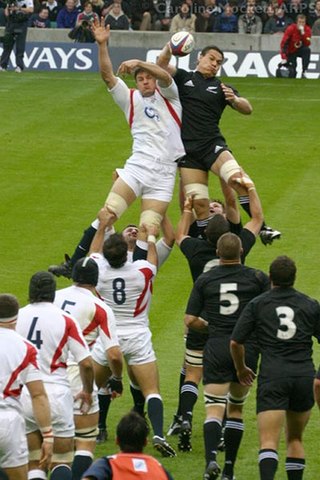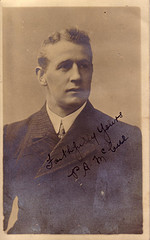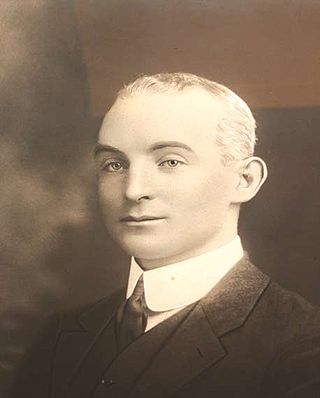Related Research Articles
The All Blacks XV is the second national rugby union team of New Zealand, after the All Blacks. New Zealand's second national team has had numerous names in its history: Junior All Blacks, New Zealand XV, New Zealand A, New Zealand B, All Blacks XV.

Rugby union has been played in New Zealand since 1870 and is the most popular sport in the country as well as being its national sport.

Australia A is the second national Rugby union team of Australia, behind the Wallabies. Matches played under the 'Australia A' title are traditionally non-test match fixtures and often offer a stepping-stone to Wallaby national selection. Aspiring Wallaby players were given a chance to impress selectors during these games. In the past, the team would also play touring sides, such as the British & Irish Lions, or play mid-week games when the Wallabies are on tour.
Brian Joseph 'Poppa' Clay (1935–1987) was an Australian rugby league footballer who played in the 1950s and 1960s. He was a five-eighth with the St. George Dragons during their 11-year consecutive premiership winning run from 1956 to 1966. He was a representative in the Australian national team in 1957 and from 1959 to 1960 earning five Test caps plus three World Cup appearances. He is considered one of the nation's finest footballers of the 20th century.

Len Smith (1918–2000) was an Australian representative rugby union and rugby league footballer who played in the 1930s and 1940s. He captained the Kangaroos in two Tests in 1948 and was controversially omitted from the 1948-49 Kangaroo tour of Great Britain.

Charles "Boxer" Joseph Russell was a pioneer Australian rugby union and rugby league footballer and coach. He represented his country in both sports and was one Australia's early dual-code rugby internationals. He was a gold medallist at the 1908 Summer Olympics.
George Keith Froome (1920–1978) was an Australian rugby league player. He was a halfback for the Australian national team. He played in eight Tests between 1948 and 1949 as captain on two occasions.

Patrick Aloysius McCue was an Australian representative rugby union player and pioneer rugby league footballer. He was a dual-code rugby international and an Olympic gold medallist.
William George "Twit" Tasker was an Australian World War I soldier who had been a national representative rugby union player making six Test appearances for the Wallabies.

Hermann Olaf Frances "Herb" Narvo was an Australian rugby league footballer and boxer of the 1930s and 1940s. He was a national representative rugby league player and national heavyweight boxing champion. He has been named among the nation's finest footballers and sportsman of the 20th century.

Andrew William Farnsworth was an Australian pioneer rugby league footballer who played in the 1910s whose club career was played in Sydney with Newtown. He represented at state level for both New South Wales and Queensland, and at the national level for Australia and Australasia. He is the brother of fellow New South Wales and Australian representative, and Newtown player Viv Farnsworth.

Edward Rennix Larkin was an Australian parliamentarian and a national representative rugby union player. Larkin was the member for Willoughby in the New South Wales Legislative Assembly from December 1913 until his death. He served in the 1st AIF, and was killed in action on the first day of the Gallipoli Campaign. He was one of only two serving members of any Australian parliament to fall in World War I — the other was George Braund, also a New South Wales MLA who fell at Gallipoli.
Frank Cheadle was an Australian pioneering rugby league footballer and AIF soldier who fell in World War I. A New South Wales interstate and Australian international representative centre, he was reputedly the first Sydney rugby union player to sign with the new breakaway league in its earliest formative days in late 1907. He played for New South Wales in the first rugby match run by the newly created 'New South Wales Rugby Football League' which had just split away from the established New South Wales Rugby Football Union.
The 1908–09 Australia rugby union tour of the British Isles was a collection of friendly rugby union games undertaken by the Australia national rugby union team against invitational and national teams from England and Wales, as well as several games against sides from North America. This was the first Australian tour of the Northern Hemisphere and the side is sometimes referred to as the "First Wallabies".
William Thornton Watson, DSO, MC, DCM was a New Zealander who served as an officer in the Australian Imperial Force in both World Wars. Prior to and after the First World War he had a distinguished rugby union career, representing Australia in eight Test matches and captaining the national side on three occasions. During the New Guinea Campaign in the Second World War he was the Commanding Officer of the Papuan Infantry Battalion. Following the war, he served as Australia's Vice – Consul to New York.
The 1912 Australia rugby union tour of Canada and the United States was a collection of friendly rugby union games undertaken by the Australia national rugby union team against various invitational teams from Canada and the U.S, and also against the US national team.
Cecil Ramalli was an Australian rugby union player and soldier. Ramalli played twice for Australia.
Frank Hurley was an Australian professional rugby league footballer who played in the 1930s and 1940s. He played at representative level for New South Wales, and at club level for the Newtown Bluebags and Hull FC, as a wing.
Dr William Joseph Ashby was an Irish rugby union international who was part of the first official British Isles team that toured South Africa in 1910. Although he played for the Lions, he was never selected to play for Ireland.
John Desmond Kelaher was an Australian rugby union international.
References
- 1 2 "Desmond Joseph Carrick". classicwallabies.com.au.
- ↑ "'Lucky 29' journey into despair - part two". The Roar . 26 May 2013.
- ↑ "Carrick's Decision Hasty, Says Newtown President". The Daily Mirror . 9 April 1943. p. 11 (Late Final Extra 2) – via National Library of Australia.